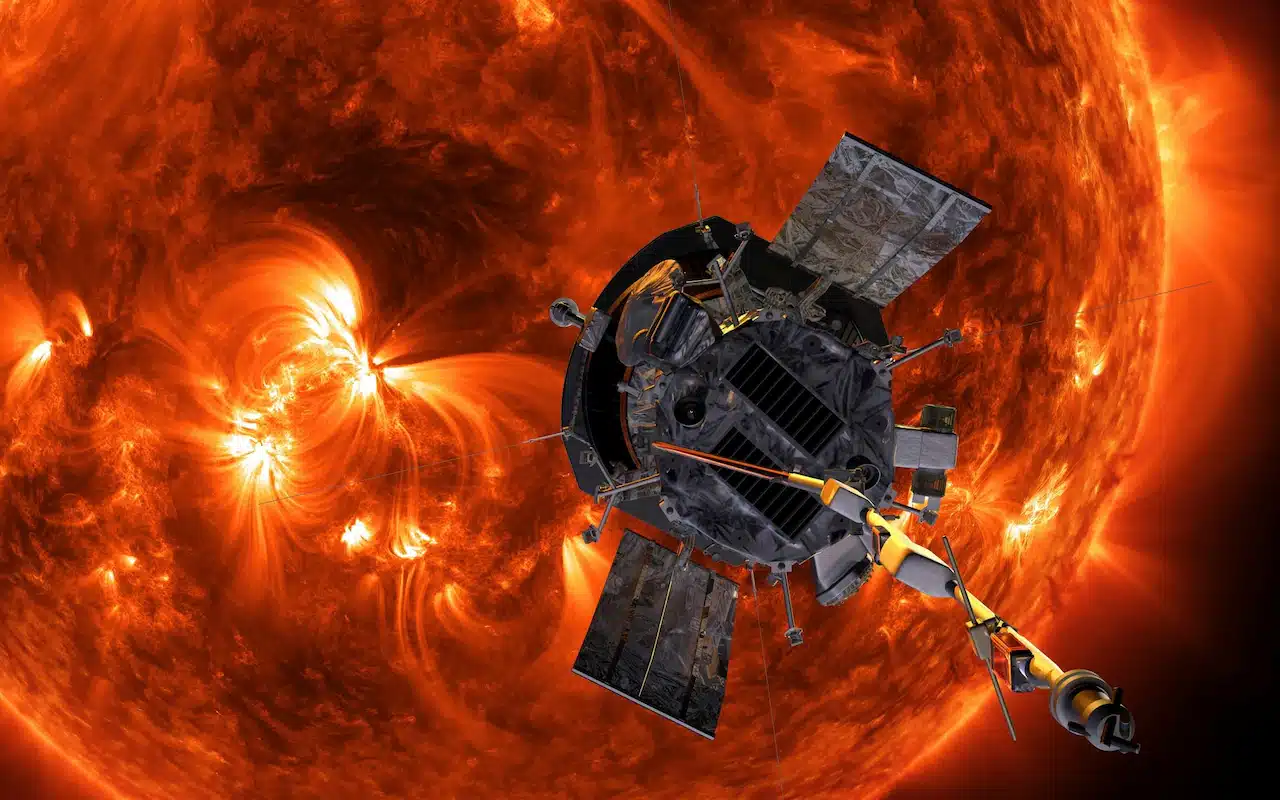A Nasa spacecraft will fly closer to the Sun than any human-made object has before with two carbon fibre panels and 4.5in of carbon foam for protection.
The Parker Solar Probe attained 3.8 million miles from the Sun at 11.53 GMT on Christmas Eve, 96% of the average distance between Earth and the Sun.
It will fly at a record 430,000mph, equivalent to going from London to New York in under 30 seconds, under massive gravitational pull.
The expedition will give scientists unprecedented Sun and atmospheric data.
Scientists hope the probe will explain why this atmosphere is millions of degrees Celsius while the Sun is 6,000C.
However, they will not be able to contact the probe for four days and will not know its success until early December 28.
The probe will reach 1,400C, where carbon steel and nickel melt and silver, gold, and cast iron liquefy.
Because particle motion disperses heat energy over space, the craft will avoid the full Sun’s bombardment.
Experts compare it to sticking your hand in boiling water vs a hot oven. Instead of heating the spaceship, heat will disperse around it.
Engineers had to create a craft that could withstand the extreme heat and send a variety of measurements to Earth without frying the electronics.
They created a 2.4-metre heat shield to withstand 1,650C, keeping the probe and its equipment at 29C.
The expedition should also assist scientists understand solar wind, the ongoing stream of charged particles from the corona.
When these particles contact with Earth’s magnetic field, northern hemisphere auroras appear.
Space weather can disrupt electrical grids, electronics, and communication networks.
The heat shield exposes the solar probe cup, which measures solar wind.
Christmas Eve was the first of three record-setting flybys, with March 22 and June 19 scheduled to return it to a similar distance.
APL Parker Solar Probe project operations manager Nick Pinkine said: “No human-made object has ever passed this close to a star, so Parker will truly be returning data from uncharted territory.
“We’re excited to hear from the spacecraft when it orbits the Sun again.”


